WESTERN COTTONMOUTH
Scientific name: Agkistrodon piscivorus leucostoma
Size
The average size of a mature Western Cottonmouth is approximately 3 feet in length. Some may grow to 4 or 5 feet in length, and on occasion may exceed 5.5 feet.
Description
The Western Cottonmouth, often called a Water Moccasin, is a heavy, thick-bodied snake. It is dark olive, brown, or black in color and usually has dark brown bands around the back and sides. These bands usually have serrated, saw-like edges. The bands are often difficult to see, and the snake's body may appears to be completely black. There is a dark stripe on both sides of the head that starts at the eye and runs backwards along the head, although this is not well defined as it is on the Florida Cottonmouth, and is often difficult to see. This stripe may be outlined on top by a lighter cream-colored pinstripe, and a contrasting lighter color below. The underside of the body is typically yellowish-white to a dark tan in color with dark blotches on it.
The Western Cottonmouth has elliptical pupils that look like cat's eyes and like all pit vipers, has a heat-sensing pit between the nostril and eye on each side of its head. The Western Cottonmouth has a large, triangular head that is wider than the neck when viewed from above.
Young Western Cottonmouths are brightly patterned and the tip of the tail on young Western Cottonmouths is yellow. The yellow tail is used to attract food. It is wiggled in a motion imitating a worm or caterpillar, which attract frogs, lizards, or other prey that the young Western Cottonmouth eats.
Distribution
In the United States, the Western Cottonmouth is found in the southeastern states of Alabama,
Arkansas, Georgia, Illinois, Indiana, Kentucky, Louisiana, Mississippi, Missouri, Oklahoma,
Tennessee, and Texas.
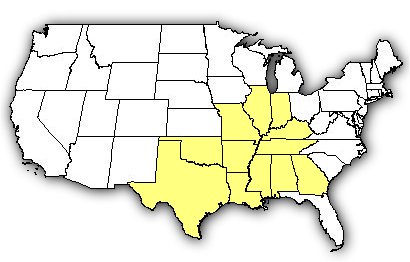
Map does not show area of true distribution, only the states in which there is a population.
Actual distribution in any highlighted state may be limited.
Notes
Although found in the southeastern United States, the Western Cottonmouth gets the Western in its name from the fact that its range extends farther to the west than the other two Cottonmouth found in the United States.
The Western Cottonmouth is typically found around freshwater such as lakes, ponds, rivers, and swamps. Along with the Eastern Cottonmouth and Florida Cottonmouth, it is one of only three venomous water snakes in North America.
When disturbed or threatened, the Western Cottonmouth with often coil up it's body, open its mouth wide, and show the white inside of its mouth as a defensive warning. The inside of the mouth looks like white cotton, which is where the cottonmouth gets its name. This defensive posture is often called gaping. One interesting fact about this display is that the fangs are typically not erect and showing, but remain retracted. This is a great example of the fact that the Cottonmouth has voluntary control over whether the fangs are erect or not when its mouth is opened.
The Western Cottonmouth is often thought of as an aggressive snake. This is partly due to the fact that they will often stand their ground, showing their defensive posture, rather than retreat. Truth is, they bite out of defense when they feel trapped or cornered, and are not an aggressive snake that will chase someone down.
Many people wrongly assume that any dark-colored snake near the water is a Cottonmouth. There are many different kinds of water snakes that live in the same areas as the Western Cottonmouth. There are ways to tell them apart. The Cottonmouth has elliptical pupils, which look like cat-eyes, whereas the other water snakes have round pupils. The Cottonmouth has heat-sensing pits between its eyes and nostrils, like all pit vipers. The other water snakes do not have heat-sensing pits. When the head is viewed from above, the eyes of the Cottonmouth cannot be seen, whereas the eyes of the water snake can be. The Western Cottonmouth swims with its head well out of the water, whereas water snakes swim with their heads in the water.
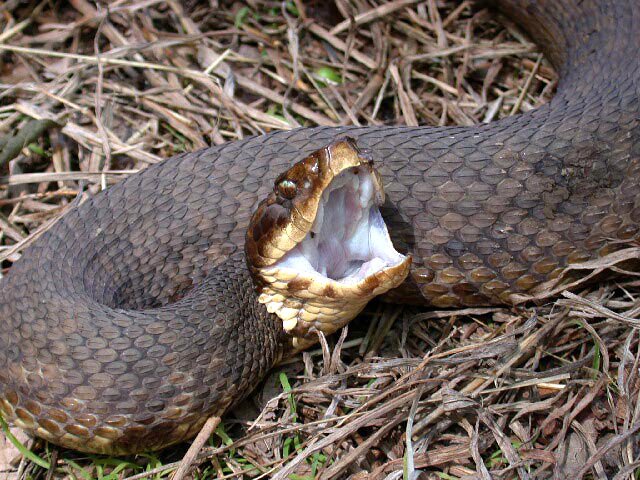
Photo used by permission:
© 2003 Steve Metz
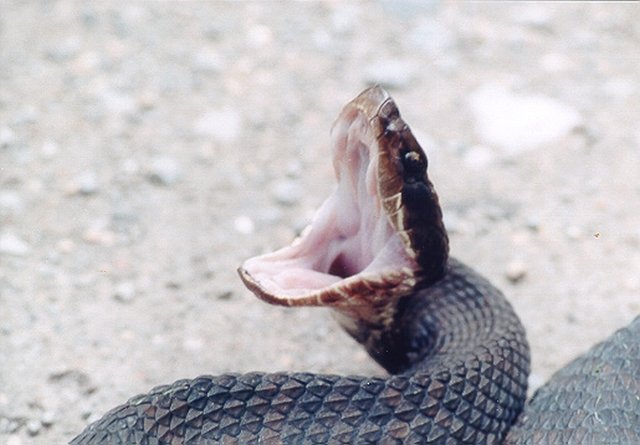
Photo used by permission:
© 2004 Mike Pingleton
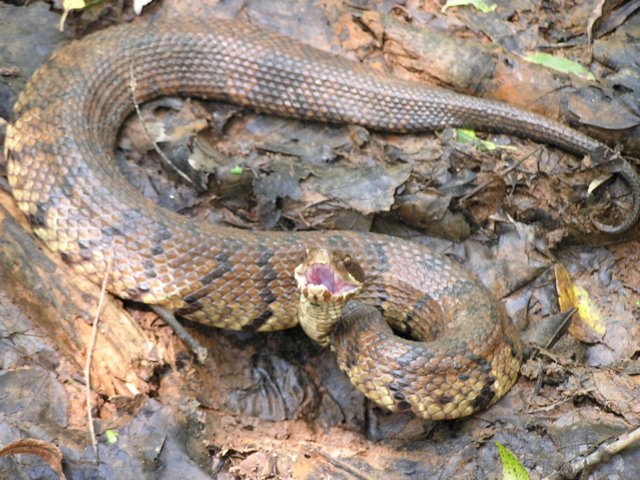
Photo used by permission:
© Steve Russ
Snake Wranglers
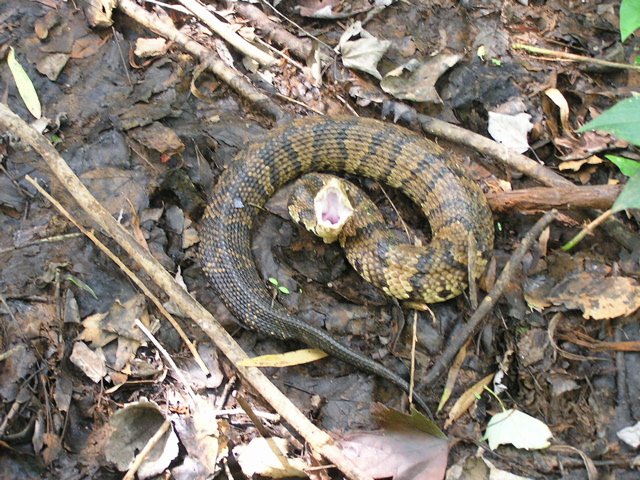
Photo used by permission:
© Steve Russ
Snake Wranglers
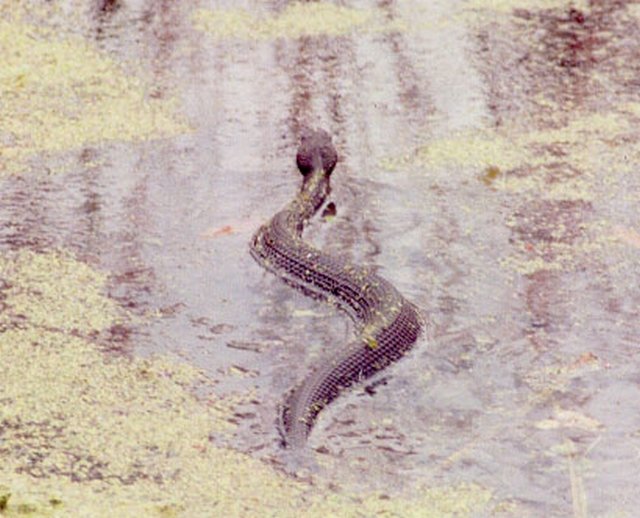
Photo used by permission:
© 2004 Mike Pingleton
For more information on venomous snakes, please see the Venomous Links page.
Terms and Conditions | Privacy Policy
Change your Cookies Preferences
